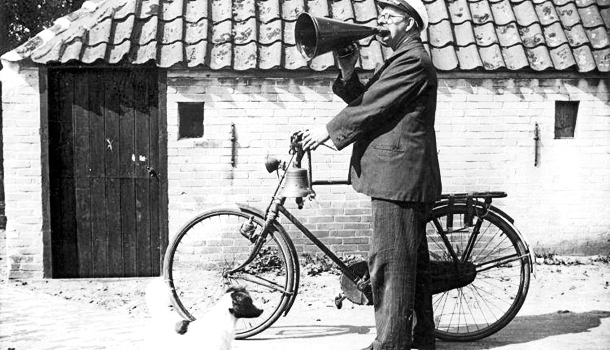
Ever wonder what it would be like to remain quiet for an entire week? Not just less talking. I mean no talking. Total silence.
It’s a bit scary, no?
Well, I just completed such a week. I recently had throat surgery, and a week of total silence is what the doctor prescribed for convalescence. Problem is, besides being a big talker, I also do a lot of talking for a living, so this was doubly challenging.
But far from the week of self-imposed hell that I was expecting, I ended up learning a lot and, when it was all said and done, there were some clear takeaways that I would like to share.
The most striking observation I had is that when you can’t speak, people relate to you differently. Rather than the usual half-conscious attention that you usually get (or that I usually get), I found that people consistently paid full attention. You see, "speaking" entailed writing on a small whiteboard that I carried around. To hear the message, people had to read the message on the whiteboard. This took a lot more effort than conversation. It was actually refreshing to get people’s full attention for a change.
Meetings take on a completely different dynamic. Rather than the usual cacophony of everyone talking at once, if I had something to say, there would be a pause while I wrote out my message on the board, which would typically be read out loud by a colleague for everyone else who couldn’t read my handwriting. (I think the first grade teacher who gave me a penmanship award would have lost her teaching license if she were to see my script today...). The transmission of the information took more time, but was much more effective.
What I also noticed was that because conveying a message involved a concerted effort, I would think twice (or three times) before writing out an idea. I found myself saying a lot less, so everything took on more importance. Less sometimes really is more.
Conference calls proceeded with a new cadence. Conference bridge technology that supports chat capabilities proved invaluable for the week. Although I didn’t try any "text to speech" technology, I don’t think it would have had the same impact as having people read my message rather than hearing it. There is definitely a different track of cognition when people absorb graphically than audible. (Note to self: Look up research that that investigates this finding in the marketing world.)
Life at home was obviously much quieter. Talk around the dinner table involved a lot of head nodding and pointing, but I found myself listening a lot more. Not just hearing more, but actually listening. My wife and I were invited to a gathering of friends over the weekend and the opportunity to just take in what people were saying without thinking about how to respond was a completely refreshing experience. The funny thing was that nobody expected me to respond or express an opinion, so it was literally like being the proverbial fly on the wall (without having to worry about the impending rolled-up newspaper).
The toughest thing turned out to be trying to reason with my teenage son and having more emotional conversations. The pace of the "conversation" and the distance introduced by writing removed an important dimension from the interaction.
Probably the biggest surprise was how comfortable it was to sit in silence. It is amazing how much of our day we fill up with noise. Until you leave the noise cycle, you don’t realize how much. Instead, I found that a lot of the week was spent in introspection. More time to think. And that led to a surprisingly large number of good ideas.
One of those was to suggest to my HR manager that it might be a good idea to periodically introduce a twist in company team meetings where one member remains silent and uses a whiteboard to communicate. Her response?
She grabbed my whiteboard and wrote "Take a hike."
For more leadership coverage, follow us on Twitter and LinkedIn.
[Image: Flickr user nationaalarchief]